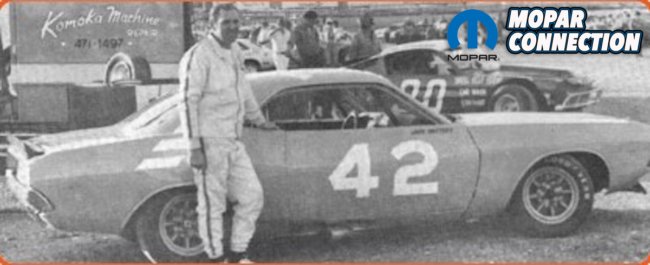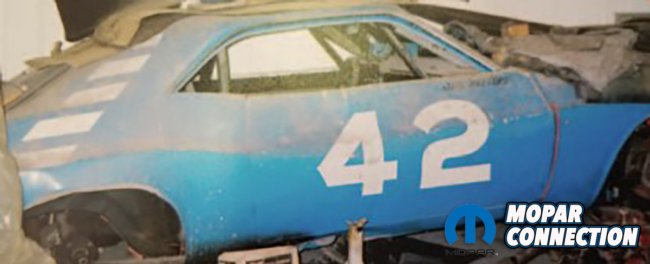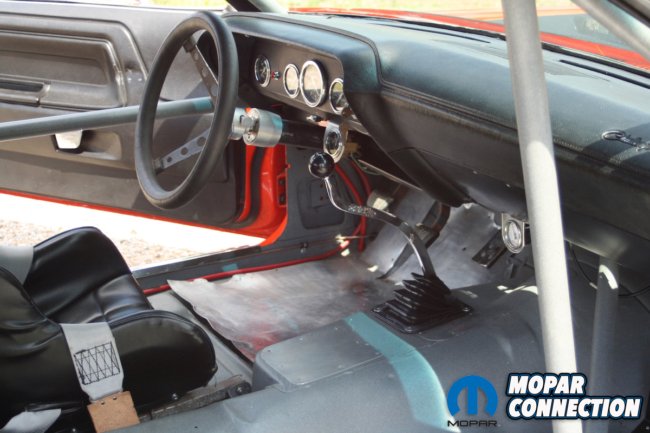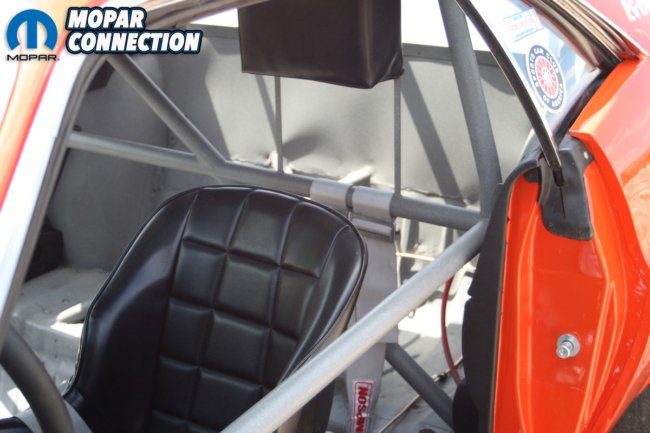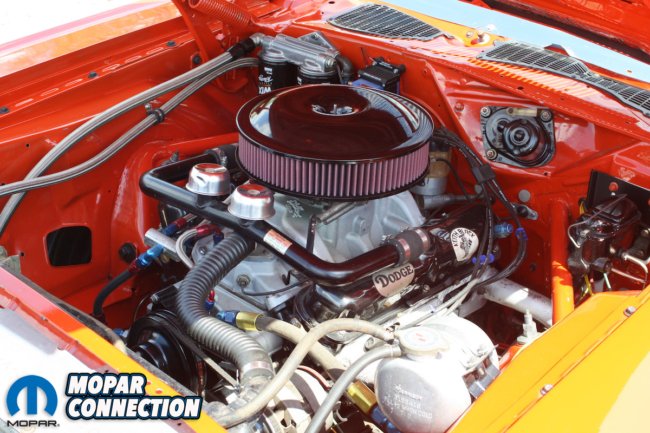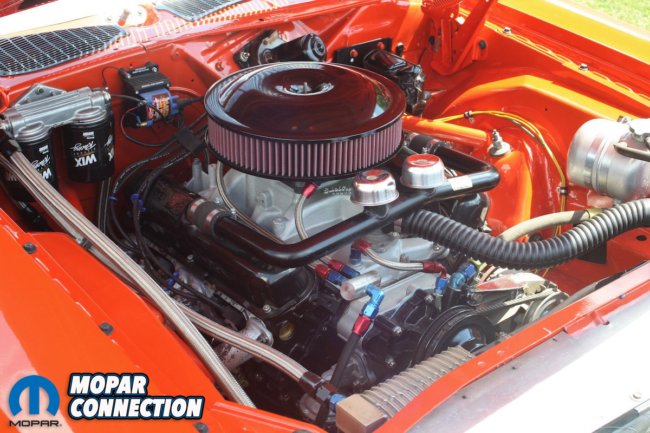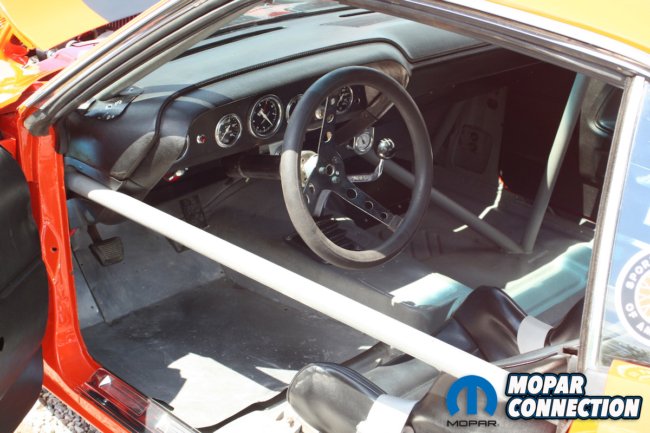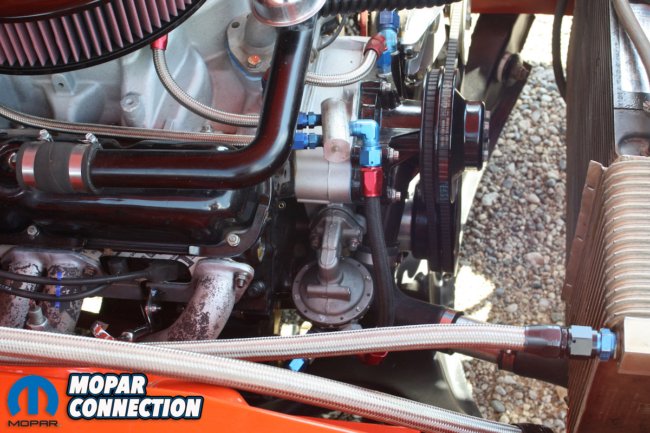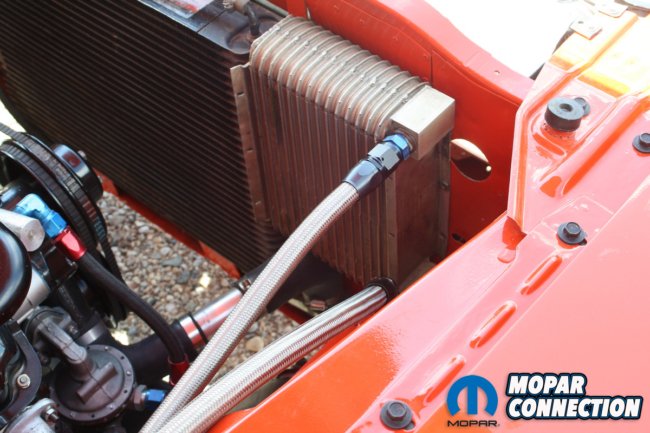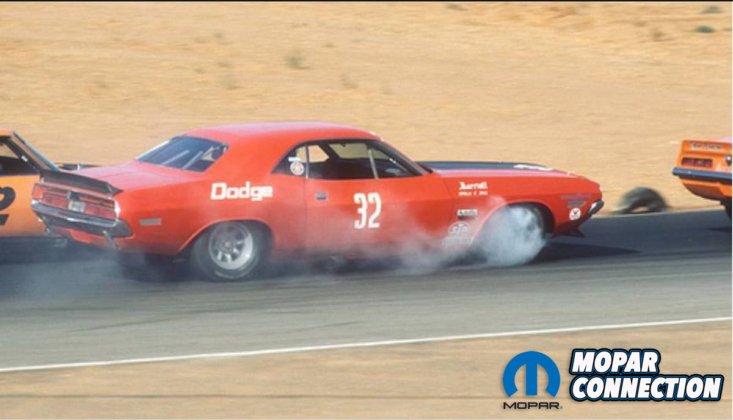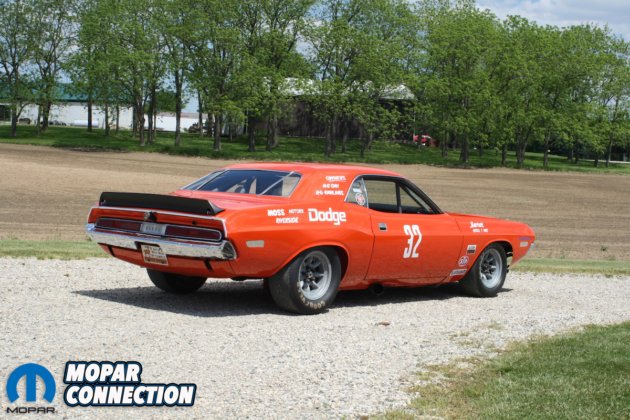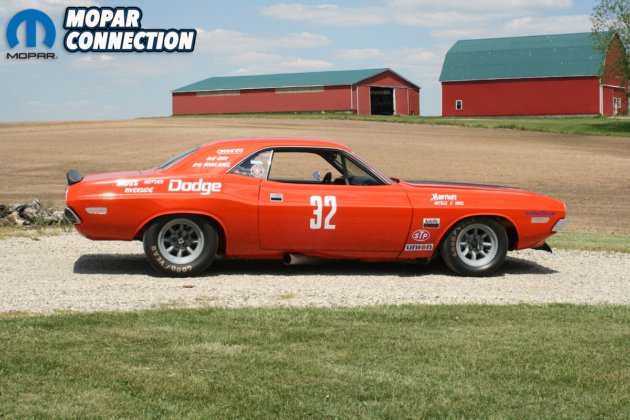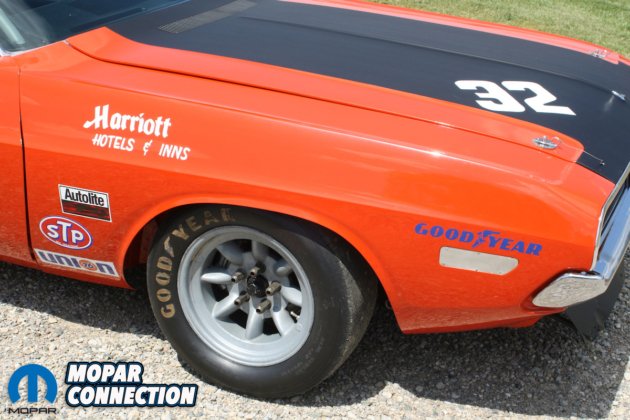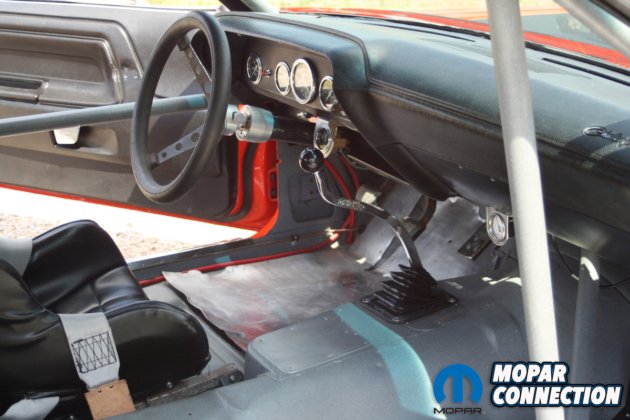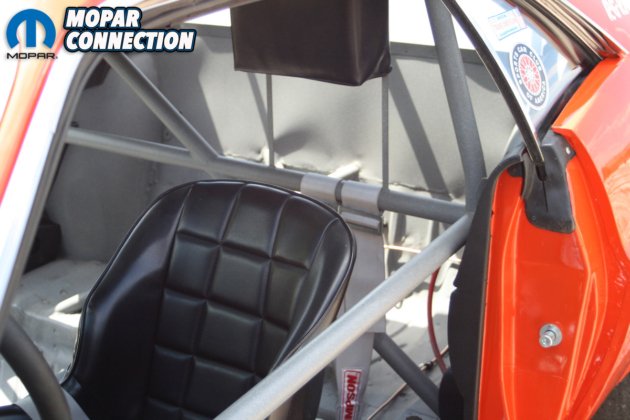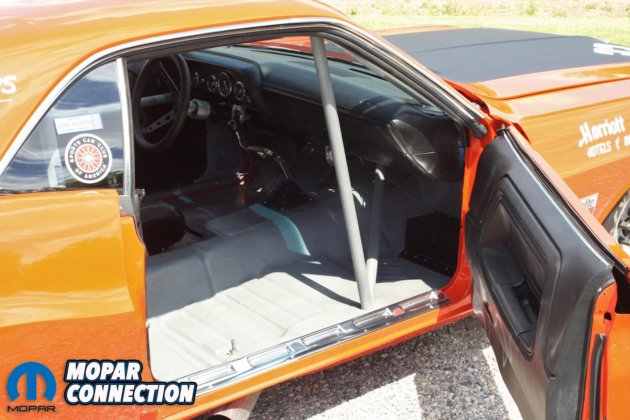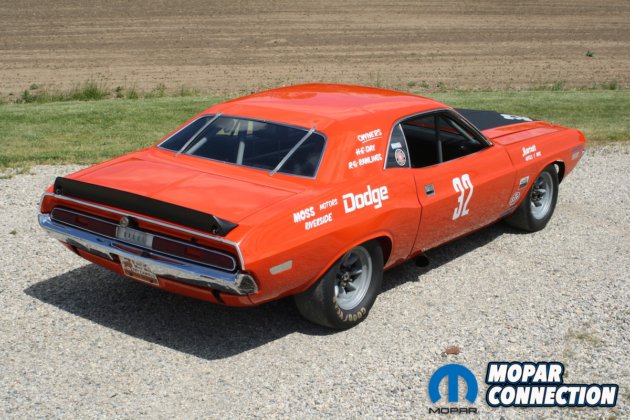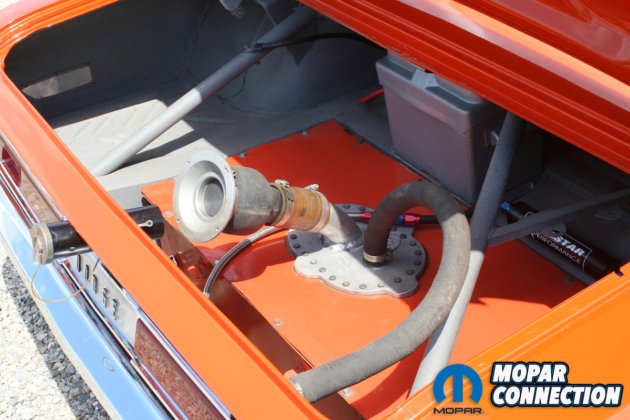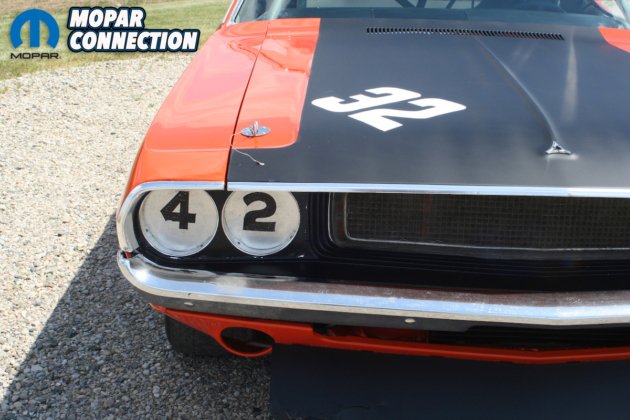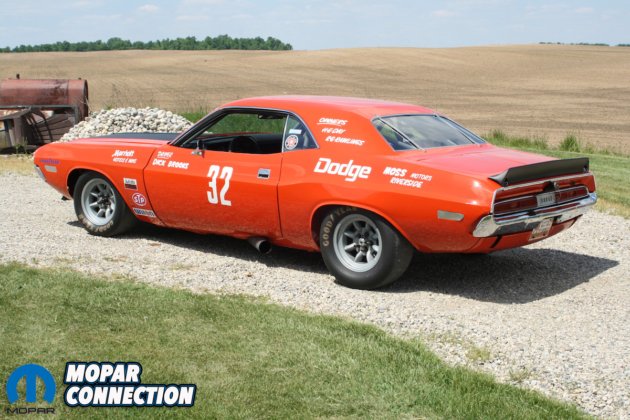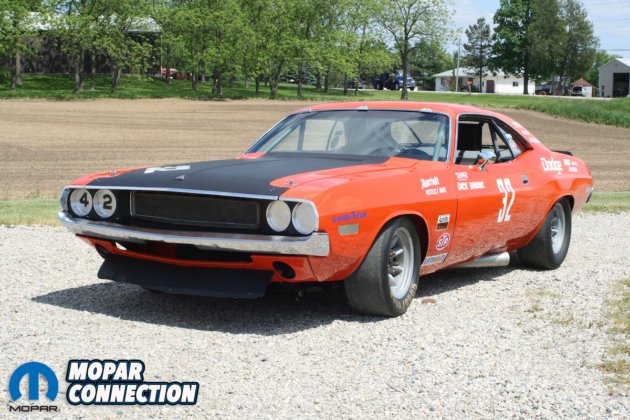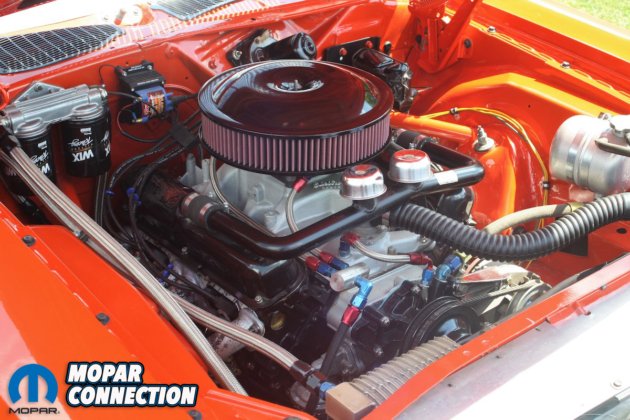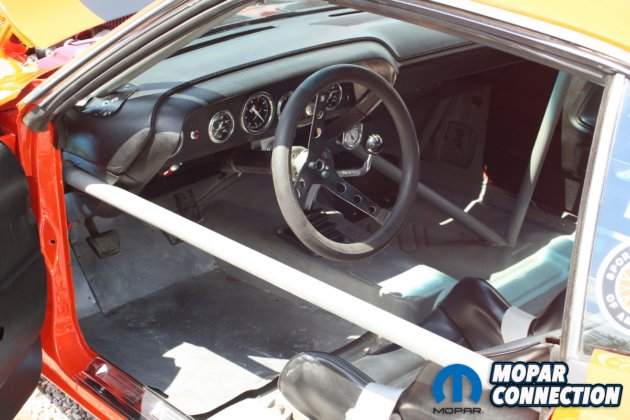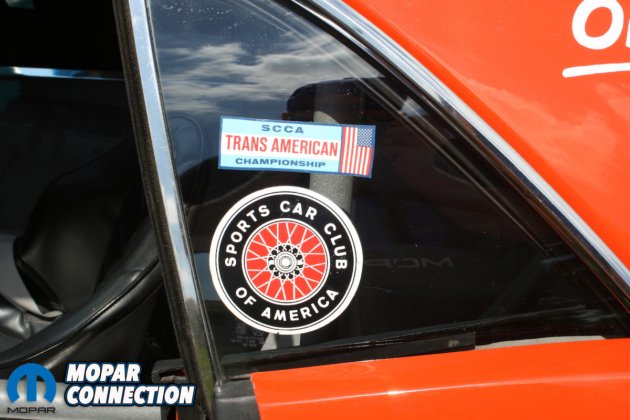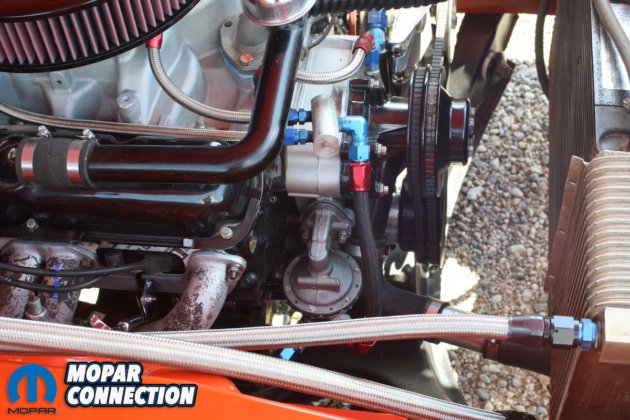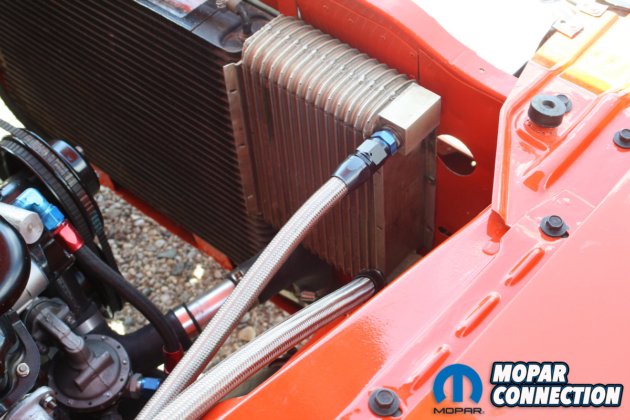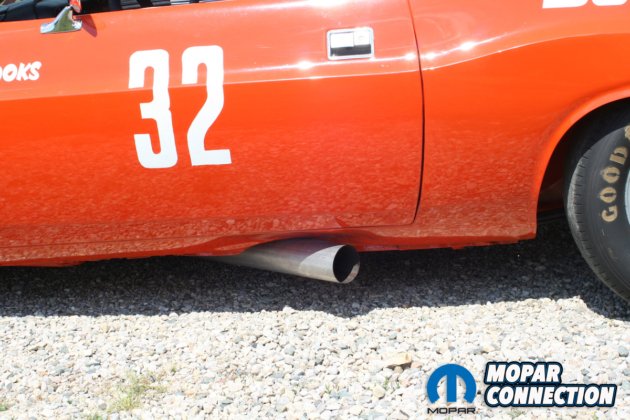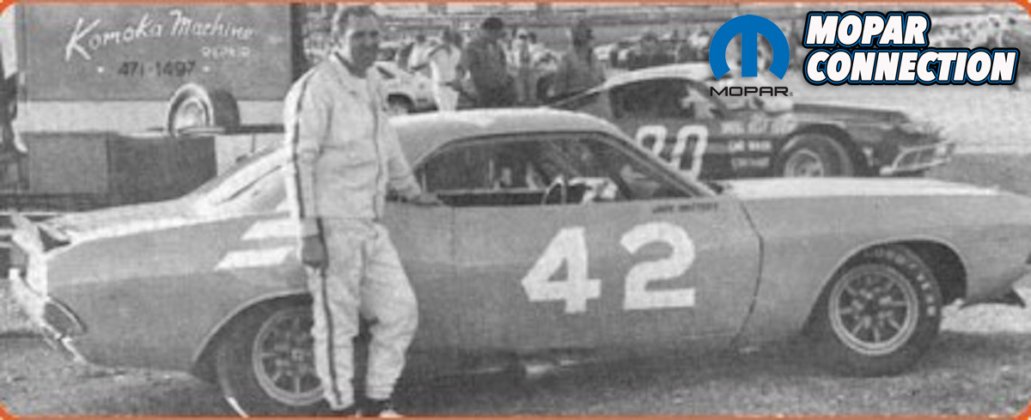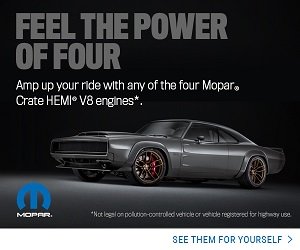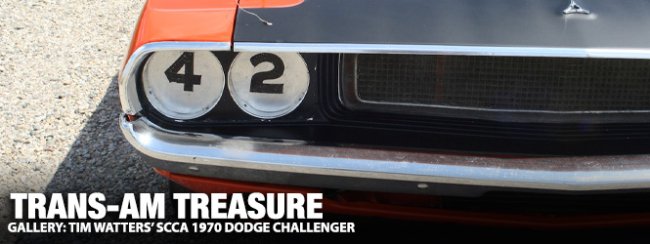
The early 1970s indeed heralded a golden age for American muscle and pony cars, both on the streets and the racetrack. The Trans-Am series, under the aegis of the SCCA, became a battleground where the prowess of V8 engines was put to the test, leading to the creation of some of the most revered muscle cars in history. The legends born from this era, like Mark Donohue and Roger Penske, continue to inspire motorsport enthusiasts and car lovers around the world.
The return of Chrysler to Trans-Am racing in 1970 marked a strategic move to boost their automotive sales with the allure of motorsport success. The introduction of the AAR ‘Cuda and Challenger T/A models under the new engine regulations showcased Chrysler’s commitment to performance and innovation.
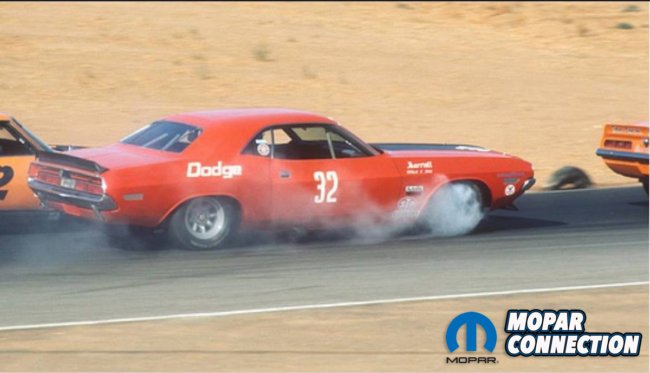
The story of this Trans-Am Challenger started with Canadian driver, Grant Clark and American veteran crew chief, Mark Schwien. Together, they established the Performance Research Racing team with the goal of entering a Dodge Challenger in the 1970 Trans-Am season. Schwien acquired the car from an east coast dealership near his workshop.
Clark secured multiple Canadian sedan championships, totaling 13, including his victory at the Players Grand Prix in 1963. Mark Schwien, the former crew chief for Rusty Jowett’s Camaro racing team, was an outstanding fabricator and race car builder. Schwien invented the refueling trap door on the rear deck lid, a design Penske later adopted for their 1969 Trans Am cars. Under Schwien’s tenure, Jowett Racing became the leading independent team in the Trans-Am series for two consecutive years.
Above left: Jack Watters with the Challenger repainted in Petty Blue with #42 numbering. Above right: The Challenger as Tim recovered it prior to the restoration.
The Challenger needed approximately 1,500 hours, or about two months, to become race-ready. The modification process started with the removal of the car’s carpet, console, and both front and rear seats. A racing seat was then installed, followed by a mandatory roll bar in compliance with SCCA regulations. The standard fuel tank was replaced with a racing fuel cell in the trunk.
Notably, the factory dashboard, interior door panels, and quarter panels remained untouched. Due to regulations prohibiting the modification of the car’s body to accommodate larger tires, the rear quarter panels were instead flared to provide additional clearance for the tires. Finally, clips and straps were added to secure the front and rear windows.
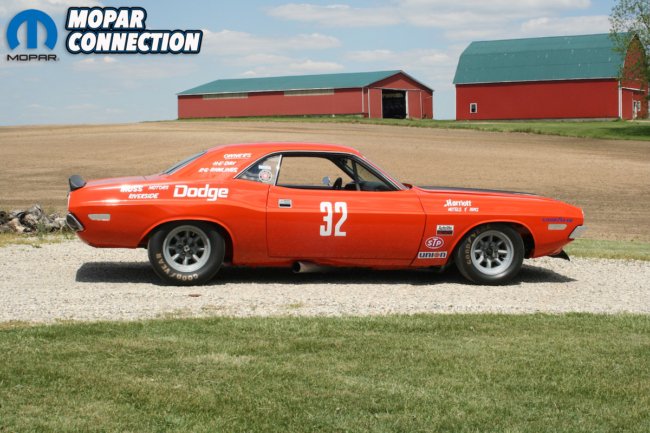
Sheet metal was welded between the back seat area and the trunk. The battery was relocated to the trunk. New performance gauges and a tachometer were installed. A chin spoiler, crafted from aluminum, was bolted on to assist with front downforce. For the rear spoiler, a Camaro spoiler was used due to the unavailability of a Mopar spoiler in time. The headlights were replaced with aluminum pieces flanking the front grille. The Challenger received a fresh coat of orange paint with a black hood and trim. It is speculated that the number 81 was used, although this has not been confirmed.
At this juncture, ominous storm clouds gathered on the horizon, signaling a downturn for the racing series as manufacturers withdrew their support. Initially, only corporate race teams received funding due to company politics, but by the end of 1970, even this support ceased. Independent teams like Performance Research Racing (PRR), lacking factory sponsorship, couldn’t afford an engine. Consequently, their car was sold without one.
RG Rawlings and HE Day purchased the car and transported it to Marietta, Georgia. While there is limited information available on them, Rawlings was the principal figure in this new team. The new proprietors procured a Keith Black engine to complete the car and prepare it for racing.
The car resurfaced on October 3, 1971, to race at Riverside Raceway in California with a new driver, Dick Brooks. The orange and black car now sported the number 32 on it, possibly to reflect their new driver. Brooks ran five practice laps in the car. Once the green flag dropped, the Challenger ran 13 laps but succumbed to engine failure. It was a DNF and was ranked in 29th position for the race, receiving the huge sum of $50 for their efforts.

This de-stroked 340 cid engine proved to be unreliable for racing. Originally not designed for racing, the 305 cid suffered from oil starvation issues going through corners at speed. SCCA regulations prevented the use of dry-sump lubrication, which would have been an instant fix.
The owners headed home and replaced the engine with a newly built Keith Black engine. Since there was no factory support of any kind, this was an expensive lesson – and once again, the Challenger was up for sale. It was at this time that Jack Watters, from Ontario, Canada, was looking for a race car. Jack needed a car for the Late Model Stock Car Series at Delaware Speedway in Ontario, a little short track outside of London, Ontario.
Jack was looking for a turn-key car that did not need a lot of work. He looked over the car, liked what he saw, and brought it home to his shop. The car only required a few modifications. An updated roll cage was needed to comply with Delaware racing rules. The original taillights and doors were removed and saved. Aluminum panels replaced the taillight lenses, and new doors were mounted.
Jack painted the car Petty blue with the number 42 because he was a big Lee Petty fan. Now that the car was ready, Jack raced the Challenger for the 1974 season until engine let go. Jack also found the car was ill-handling in the turns due to the fact that it was so nose-heavy. At this point, he decided to move the firewall back to distribute the weight more evenly and help run on the oval track. He started on the project, but it all came to a grinding halt. Balancing between family life and a hectic work schedule, he just did not have time. The car was covered and put in the corner.
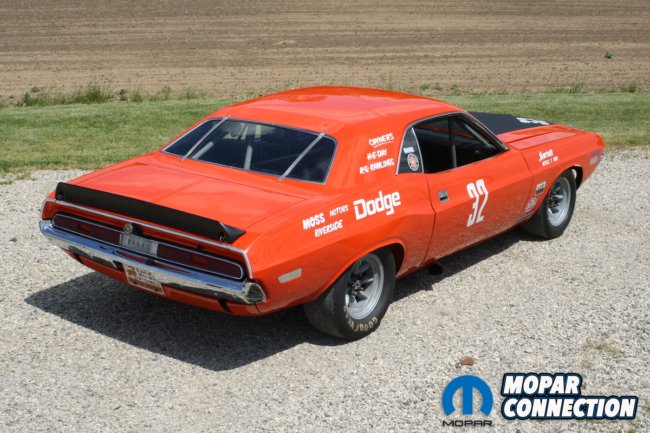
Jack’s son, Tim Watters now has the car. After looking at the car for 30 years, Tim decided to restore it as it raced in Riverside back in 1971. So in 2005, Tim started to put the Challenger back together. Starting with the firewall and inner fenders, which he put back into their original location.
The roll cage was also returned to its original configuration as per the specifications for the Trans-Am series. The rear taillights were reinstalled, along with the original doors that still had 32 on them. The rear bumper is still the same bumper used in the Trans-Am series and Delaware Late Model series.
Tim painted the car himself, bringing it back to the original paint scheme of Hemi Orange with a black hood and trim. Just like back in the day, Tim hand painted the proper sponsors and correct lettering. Tim wanted the car to look like the team did it in the shop, so the finish is not showroom perfect. The one thing that Tim did not change was the number on the headlight cover. If you look closely, it still has his dad’s old number 42 on it, on the right-hand side. A visual reminder of his dad, Jack.
The engine used in the Trans-Am series was a 340-cubic-inch unit that would have to be de-stroked to bring the 5.6 liters to 5 liters. The racing engines would retain the same bore, but the stroke would be reduced from 3.31 inches to 2.96 inches. This gave a displacement of 303.8 cid. Feeding through a single Holley 730 cfm carburetor, the racing engine would produce around 450 hp.
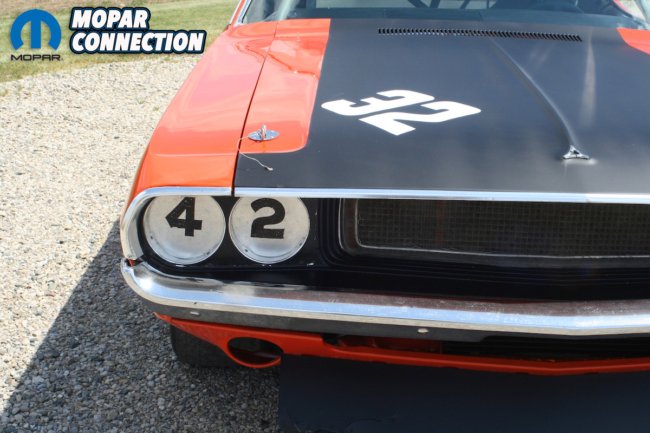
The new engine replaced the old engine that was blown when it was raced at Delaware. Like all the 340 before it, it too was de-stroked. Bill Little, from Belmont, Ontario, built the new engine for the restoration. Once the engine was installed, it was detailed just like it was racing in 1971. If you examine the value covers, you will see the original covers with a Keith Black decal.
Behind the engine, an A-833 4-speed manual transmission. The car originally had a transmission from an E-body, but when the car was built in the 1970s, they used a 1964 B-body A-833 transmission. If you check out the transmission tunnel, you will see a plate covering the original location of the old transmission. The car has NASCAR gearing in the transmission. The rear axle was a stock 8¾ rear with floating hubs with 3.55 gears in back.
The car rides on Goodyear Blue Streak racing tires that are mounted on 15-inch Minilite magnesium wheels. The exhaust and headers were custom made when the car was built in 1970, with body modifications to fit the exhaust just under the doors. The suspension included custom-made leaf springs that were moved an inch inward. Koni shocks are used to dampen the bumps.
For stopping power, front brakes from a 1969 or 1970 Thunderbird were used with 12″ rotors and 4-piston calipers. The rear brakes were Hurst Airheart disc rotors with 4-piston calipers. Tim still has a few things to do, like connect the fuel filler hose back to the gas tank the way it was in 1970. The original fuel cell was removed for another stock car but has now been returned to the Challenger.
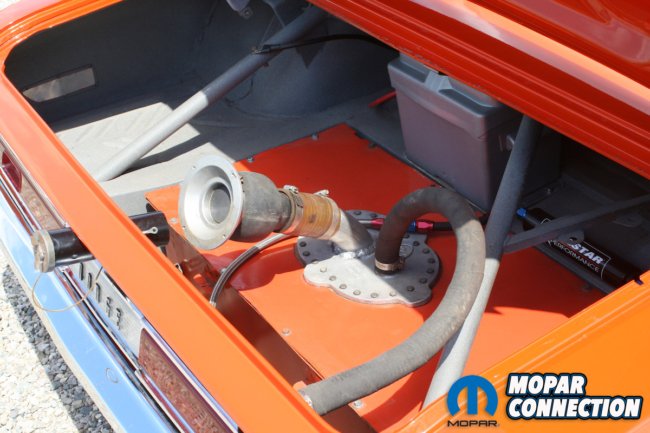
Tim has the Challenger close to completion and has decided to debut the car at the Mopar Day show at the St. Thomas Dragway in 2020. Unfortunately, many people did not recognize the true historic value of this race car for what it is and how important it is in Mopar history. It was not only the last attempt at racing in one of the hottest racing series but also the last attempt by an independent team.
Tim Watters’ efforts to preserve and restore such a significant piece of Mopar and Trans-Am history are remarkable. The dedication to detail and the connection to its racing roots truly honor the car’s legacy. It’s fascinating to hear how this 1970 Dodge Challenger is being revived and how it now has a new life awaiting it in the Historic Trans Am series. It’s inspiring to think about how much passion and craftsmanship goes into keeping these treasures alive for future generations.



